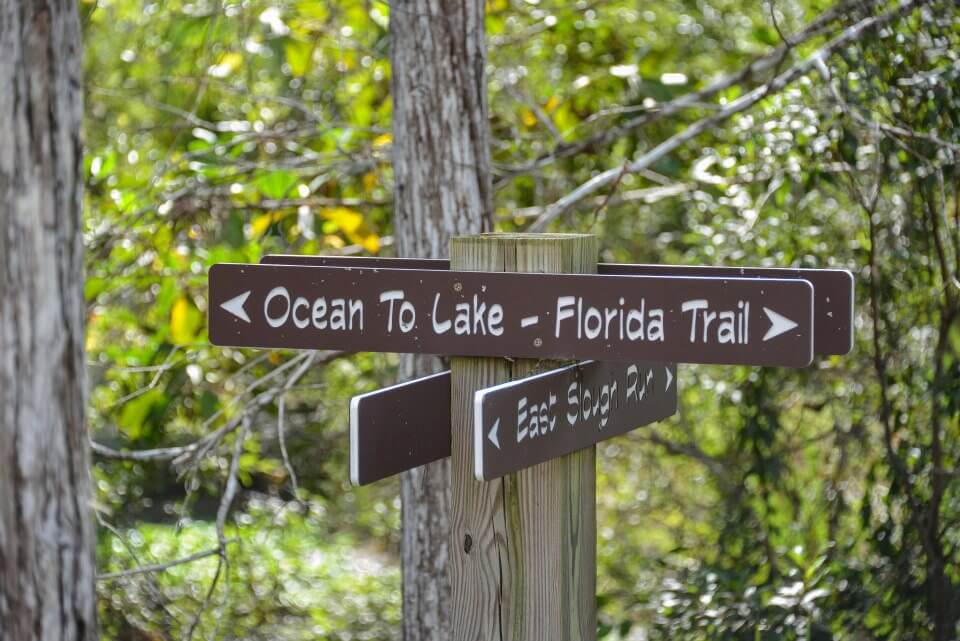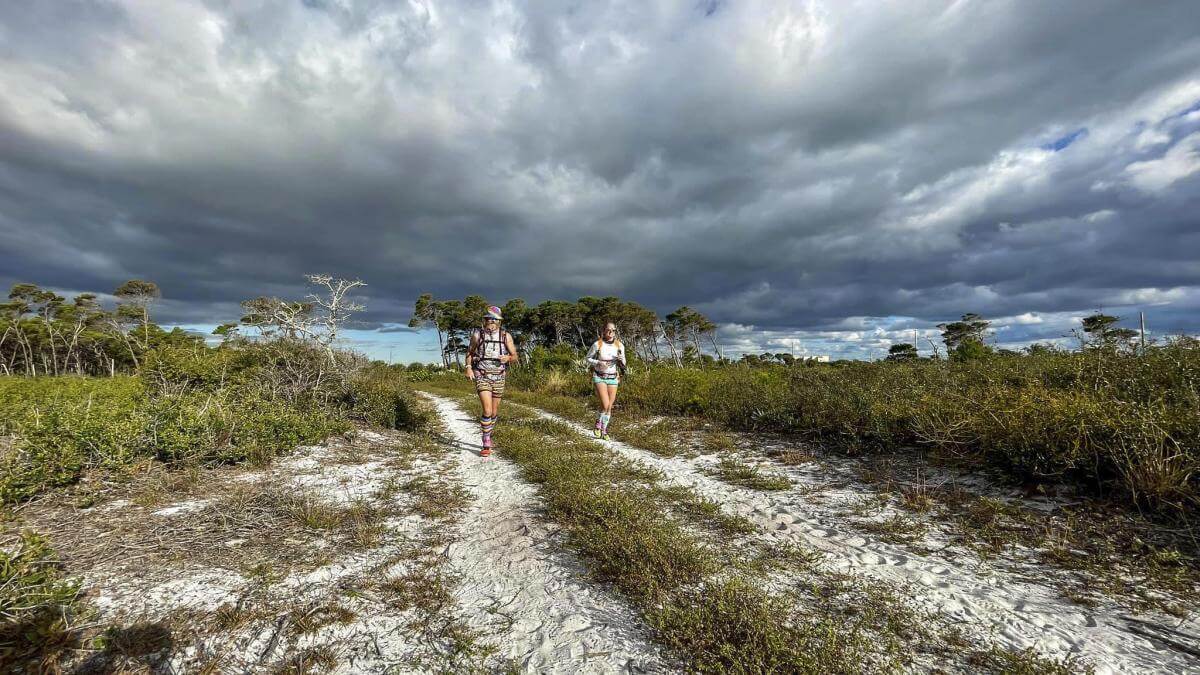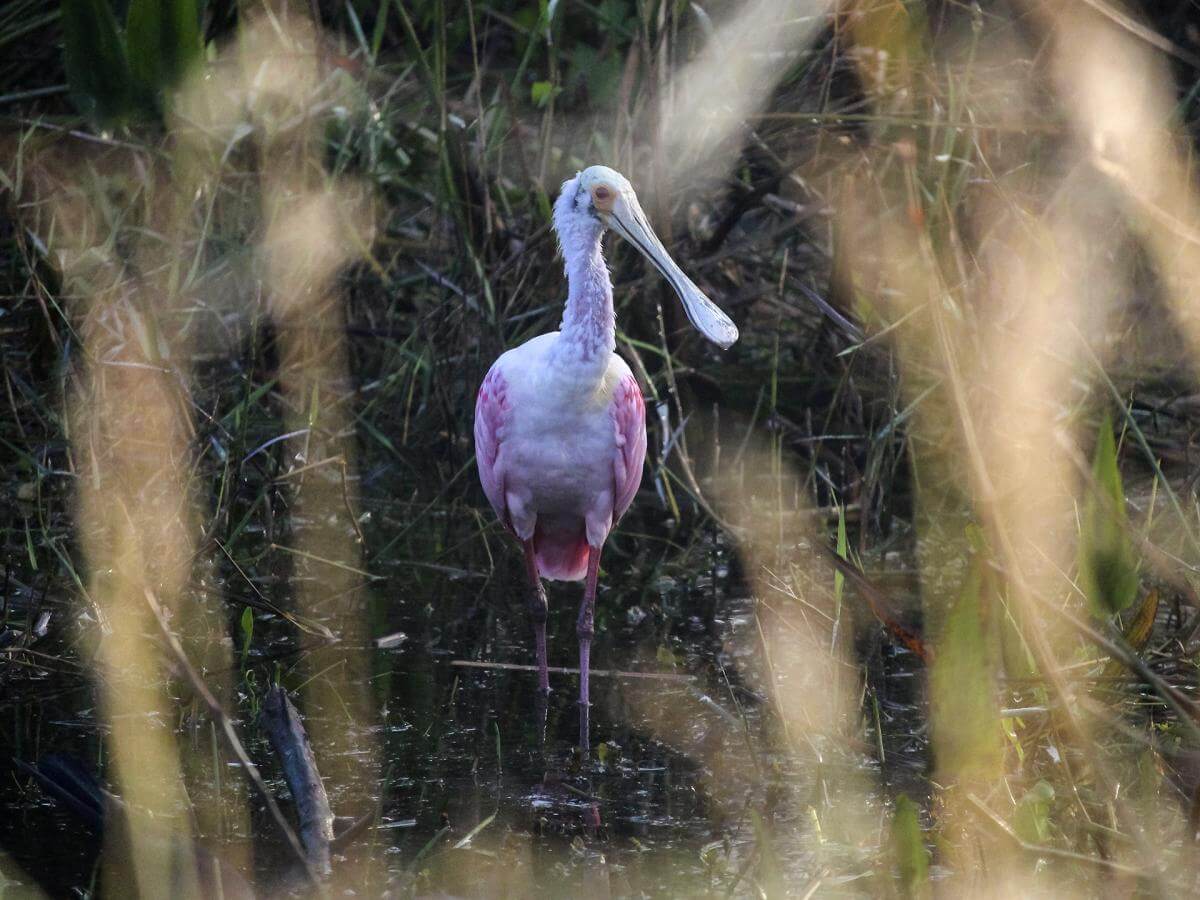Outdoor Activities for Ultimate Adventure Seekers
Nature lovers will delight in these immersive, off-the-beaten-path experiences in The Palm Beaches.
The Palm Beaches have a long legacy of welcoming travelers to its sun-drenched beaches and elegant resorts, but they are also home to a hidden wild side that’s waiting to be discovered. Here we have included our top outdoor activities for ultimate adventure seekers!
1. Bike Jeaga Wildways from Jupiter to Palm Beach Gardens
Jeaga Wildways, a system of four multi-use trails, connects 160,000 acres of public lands in northwestern Palm Beach County. The trails allow hikers, cyclists, and equestrians to traverse some of the area’s most scenic natural beauties. The hub of Jeaga Wildways is Riverbend Park in Jupiter. From the park, explorers can head south on the Bluegill Trail through Loxahatchee Slough Natural Area to Karen T. Marcus Sandhill Crane Access Park in Palm Beach Gardens.
This 7.4-mile ride (about 15 miles round trip) features views of cypress trees and freshwater wetlands teeming with bird life – everything from roseate spoonbills and white ibis to snail kites and red-shouldered hawks. Restroom facilities and an observation platform at Karen T. Marcus Sandhill Crane Access Park offer bicyclists a chance to refresh themselves before the ride back to Riverbend Park.
2. Trek the Ocean to Lake Hiking Trail
If you’re a true trekker, this is your calling! The Ocean to Lake Hiking Trail runs almost 62 miles through both Martin and Palm Beach counties, spanning from the Atlantic Ocean to Lake Okeechobee. It commonly takes five days to complete the entire length of the trail, with campgrounds and accommodations available along the way.
The Ocean to Lake Hiking Trail is part of the Florida National Scenic Trail, one of only 11 trails given this designation in the country. The trail begins at Hobe Sound Beach and meanders through Jonathan Dickinson State Park, Riverbend Park, J.W. Corbett Wildlife Management Area and DuPuis Wildlife and Environmental Area, with its terminus at the Lake Okeechobee Scenic Trail.
This experience may be challenging in distance, but it’s the ultimate way to see how the Everglades connect to local coastal ecosystems. Of course, you always have the option of just hiking a portion of the trail.

3. Rent a kayak and paddle the Loxahatchee River
The Loxahatchee River flows just over 7.5 miles from Riverbend Park in Jupiter to the Atlantic Ocean. At the park, you can rent a kayak and paddle the tannic, coffee-colored waters, taking in the natural beauty of the Sunshine State.
While paddling, explore the freshwater habitat. If you live on the coast or are planning a beach vacation, it can be easy to focus on the sun and surf. But a day on the Lox — one of just two National Wild and Scenic Rivers in Florida — can give you a new perspective on what the state has to offer. You’ll be surprised by the picturesque yet often overlooked freshwater habitat.
In the water, keep an eye out for river otters, turtles and fish like mullet and bass. On the banks, you may see gopher tortoises, deer, turkey, and raccoons. And don’t forget to look up: In the canopy of cypress trees, you can find owls, ospreys, egrets and even the occasional bald eagle flying overhead. Enjoy the sounds of water bubbling over rocks and swooshing around corners as you drift along with the current. The fresh air and calming scenery allow for a peaceful reprieve from the hustle and bustle of daily life.

4. Go trail running at Jupiter Ridge Natural Area
If running the flat-as-a-pancake trails found at most parks in South Florida is just too easy, try huffing and puffing your way up and down ancient sand dunes at Jupiter Ridge Natural Area.
This 270-acre natural area protects endangered Florida scrub habitat that’s home to sand pines, prickly pear cactus and gopher tortoises. Highlights of the 1.7-mile south trail loop include a view of Ski Beach along the Loxahatchee River-Lake Worth Creek Aquatic Preserve, an active osprey nest and a climb to one of the highest natural elevation points in The Palm Beaches.
If that’s not enough distance for you, add in a run along the 0.6-mile north trail loop that passes by a mangrove habitat restoration project area and observation platform. The entrance to Jupiter Ridge Natural Area is on the west side of U.S. Highway 1 just south of Indiantown Road. A map of the trails can be found at the information kiosk in the parking lot or right on your phone by visiting pbcnaturalareas.com.

5. Paddle the wetlands at Winding Waters Natural Area
Did you know that there is a 3.3-mile paddling trail through freshwater wetlands roughly 5 miles west of downtown West Palm Beach? The 548-acre Winding Waters Natural Area, along Haverhill Road just north of 45th Street, features a 165-acre marsh that was not there when the county purchased the property.
Department of Environmental Resources Management staff spent several years restoring the property. The work included removing canals running within the site, excavating the marsh, and constructing three water control structures. The effort paid off, and Winding Waters Natural Area is now a West Palm Beach natural oasis. Paddlers can put in their canoes or kayaks at the launch area in the parking lot on Dyer Blvd. The 3.3-mile trail follows the perimeter of the wetlands and allows for an up-close view of birds, alligators, fish and turtles.

6. See birds of all sizes at Pine Glades Natural Area
The 6,651-acre Pine Glades Natural Area is a birding hot spot. Located in Jupiter along Indiantown Road roughly 7 miles west of Florida’s Turnpike, the natural area protects slash pine woods, cypress swamps and freshwater marshes. This combination of trees to shelter in and waters to forage in attracts a wide variety of wildlife.
If a bird forages for food in wetlands, you will probably find it at Pine Glades. Keep an eye out for roseate spoonbills, egrets, herons, Florida sandhill cranes, snail kites, ospreys and more. There are more than 6 miles of trails for birders to explore as they hunt for a glimpse of The Palm Beaches’ feathered residents, so grab your binoculars and come out to Pine Glades to watch this avian airshow. Be aware that portions of the hiking trails may be under water. A map of the trails can be found at the information kiosk in the parking lot, online at pbcnaturalareas.com or on your smartphone.

7. Explore Grassy Waters Preserve
Grassy Waters Preserve is composed of 23 square miles of undeveloped Everglades habitat, which is ironic because its protection is largely due to being purchased by Florida’s most-famous real estate developer. In 1904, Henry Flagler purchased the large wetland tract to supply drinking water for the fast-growing communities surrounding Palm Beach. Today, it still serves as the primary water reservoir for the City of West Palm Beach, while occupying 50 percent of the city’s geography.
Grassy Waters Preserve is the most accessible Everglades encounter in the area. In addition to its location being within city limits, it features the stunning 1-mile loop Cypress Boardwalk that’s both wheelchair and stroller accessible. It’s a great way to be immersed in the wetlands while staying dry.
If you’re feeling more adventurous, plan your visit during one of the Grassy Waters Swamp Tromps. During this wet hiking tour, you can expect to get about knee deep in the water. Enjoy views of the serene swamp water as it reflects the canopy of cypress trees and ferns overhead. Be sure to wear closed-toe shoes with a snug fit — you don’t want your shoes to get sucked in the muck! Swamp Tromp tours are priced at $5 per child and $10 per adult.

8. Hike through pines, prairies, and cypress trees at Loxahatchee Slough Natural Area
For those who want to lace up their hiking boots and spend several hours exploring a South Florida wilderness, check out Loxahatchee Slough Natural Area in Palm Beach Gardens.
The Palm Beaches’ largest natural area, at more than 12,000 acres, protects wet prairie, freshwater marsh, slash pine flatwoods and cypress swamp habitats. You can access these natural wonders from public-use facilities on Beeline Highway just north of PGA Blvd.
Hikers can travel along a 5-mile loop that begins on a paved walkway and transitions between dirt hiking trails and crushed rock maintenance roads. Highlights along the route include a wetland observation platform at the end of the paved walkway and an observation tower 1.4 miles into the hike that both offer spectacular views.
From the tower, hikers travel a 1.63-mile portion of the Ocean to Lake Hiking Trail before coming back to the parking lot along two marked hiking trails. Be aware that portions of the Ocean to Lake Hiking Trail may be under water. A map of the trails can be found at the information kiosk in the parking lot, online at pbcnaturalareas.com or on your smartphone.

9. See birds at Arthur R. Marshall Loxahatchee National Wildlife Refuge
This wildlife refuge has over 145,000 acres of protected Everglades ecosystems. Established in 1951 under the Migratory Bird Act, this spot is a nature photographer’s dream!
Loxahatchee NWR is the gateway to the Great Florida Birding Trail. It’s home to the endangered snail kite, sandhill cranes, wood storks and bald eagles among the total 250 bird species found in the refuge. The spot to get the best nature shots is at one of the observation towers or the photo blind along the Marsh Trail.
Birds aren’t the only flying friends at the Loxahatchee NWR; 40 species of butterflies also inhabit the area. There’s a butterfly garden near the visitor center to view them up close. Also nearby is the Cypress Swamp Boardwalk, a half-mile trail that’s cooled by the shade of the cypress canopy draped in Spanish moss. The entrance fee is $10 per day and passes can be purchased in advance online.

10. Go for a walk along Juno Dunes
With parking just off U.S. Highway 1, a walk along Juno Dunes could not be easier to enjoy. The 576-acre natural area is nestled between the ocean and the Intracoastal Waterway. The area contains a diverse ecosystem of scrub forest positioned alongside ocean dunes, offering a wide selection of local plants and wildflowers.
There are two hikes to choose from, each about a mile in length. Bring a hat, because finding a shady spot can be a challenge. The oceanside loop connects to Juno Beach’s Loggerhead Park, which offers restrooms, a playground and the popular Loggerhead Marinelife Center, where you can learn about sea turtles and visit a recovery center for injured specimens.

11. Go Paddleboarding at Peanut Island
Paddleboarding at Peanut Island a captivating adventure that promises both tranquility and excitement. Nestled within the pristine waters of the Intracoastal Waterway, this idyllic island offers a perfect backdrop for paddlers of all levels. As you glide along the calm, crystal-clear waters, you’ll have the chance to marvel at the diverse marine life below, including colorful fish and the famous Florida manatees.
Whether you’re a novice seeking a leisurely outing or an experienced paddleboarder looking for a thrilling workout, Peanut Island’s paddleboarding experience has something for everyone. It’s a serene escape where you can connect with nature and enjoy the beauty of The Palm Beaches from a unique perspective.




